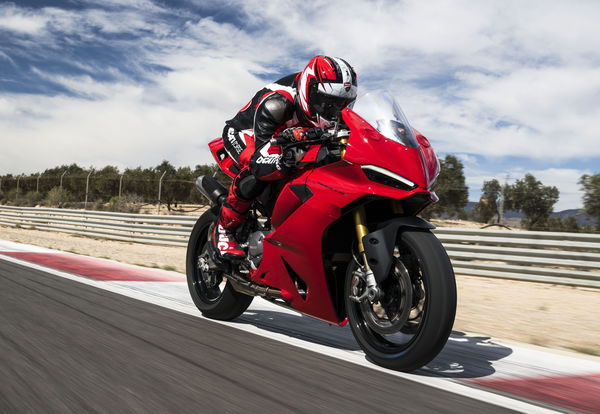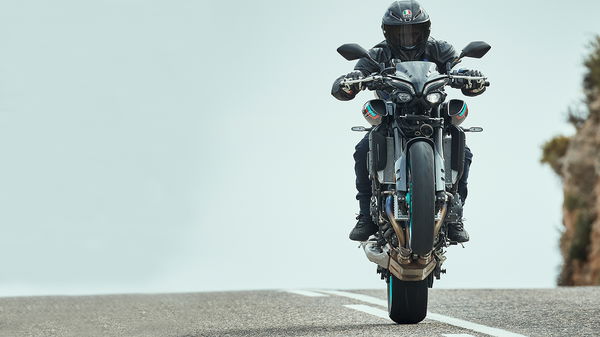New Royal Enfield Classic 650 First Ride Review: Expect the Unexpected
I spent a full day riding Royal Enfield’s all-new Classic 650, a bike which encompasses class, elegance and all things retro
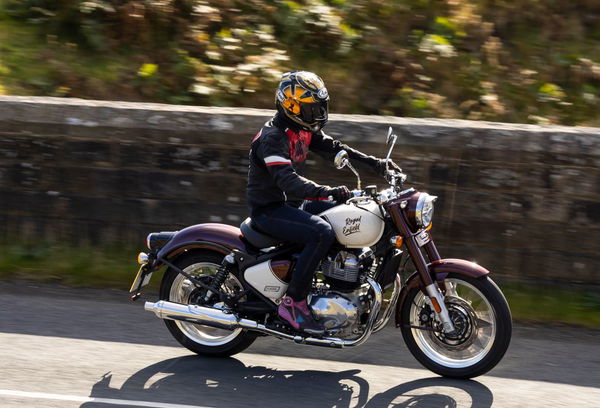
The younger, but big brother in terms of power to Royal Enfield’s Classic 350 and 500 models is officially here.
It taps into RE’s innate ability to spawn many bikes from one platform, in this case using the Super Meteor 650 and Shotgun 650 as a base, but with the clock turned back further in the styling department.
I rode the bike on a variety of roads and through the Northumbrian mountains, to find out if it’s any good.
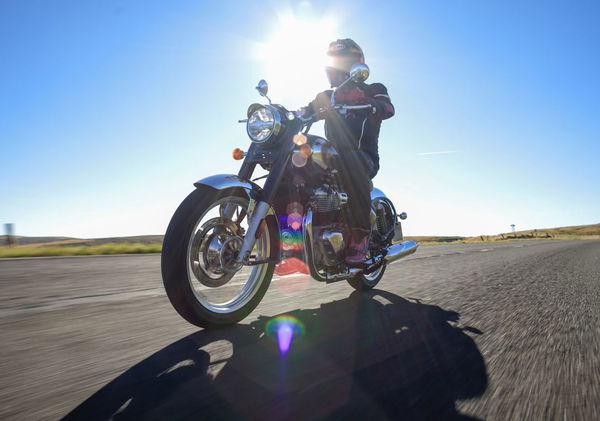
Royal Enfield Classic 650 pricing, availability and colours
Some nice touches to the Classic 650 start with the multitude of colour options. I spent the day riding one of the Vallam Red variants and aesthetically Royal Enfield has really hit the nail on the head. There is also a Black Chrome colourway, Bruntinghtorpe Blue and Teal options to choose from. None of the bikes feature a pillion seat as standard, however, they are available as customisation parts when buying a Royal Enfield Classic 650 from your local dealer.
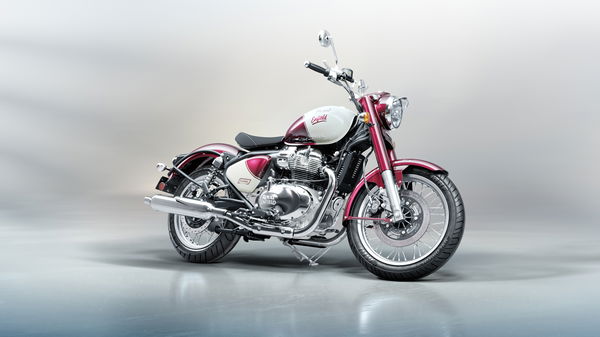
We’re still waiting for pricing and availability for the new Classic 650 in the UK, but based on the Super Meteor 650, which depending on the colour you go for ranges between £6,799 and £7,299 or the Shotgun which has an RRP of £6,999, we think that’s the ballpark you will find the Classic 650 sitting within.
Royal Enfield Classic 650 Engine, Chassis and Technology
The Classic 650 consists of an inline twin-cylinder four-stroke 647cc engine that produces 46.4bhp and 38.5Ib ft of torque. On the suspension front is a Showa telescopic 43mm fork with 120mm travel, while the rear again features Showa and comprises a twin shock with 90mm of travel.
A single 320mm hydraulic disc brake, with a twin-piston floating calliper is the set-up used on the front and a 300mm disc brake that also includes a twin-piston floating calliper.
The dash unit features a digital LCD screen with an odometer, trip metre, fuel level indicator, service reminder, gear position indicator and clock. Additionally, the motorcycle will be offered with Genuine Motorcycle Accessories in the Classic and Classic Tourer-inspired themes, allowing riders to fully customise their machine. The motorcycle is also A2 licence-friendly.
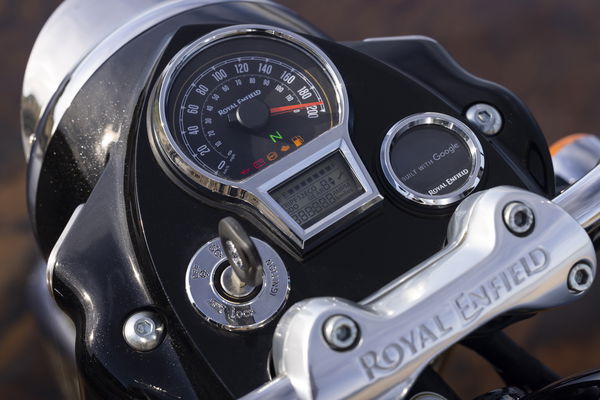
The Classic 650 shares its mainframe with the Shotgun 650 and Super Meteor, while Royal Enfield’s classic ‘frame-loop’ is a feature on all three. The 43mm Showa telescopic suspension forks are the same as the Super Meteor, however, there’s less travel between the rear of the Classic 650 (90mm) and the Super Meteor (101mm). The brakes are the same as the Shotgun 650 and the Super Meteor. The Classic is also very different to the Interceptor 650 when it comes to the brakes, as the latter features a much smaller 240mm disc at the rear. The suspension on the Interceptor is also a steel tubular, double cradle frame, as opposed to the spine frame that’s found on the Classic 650.
What’s it like to ride?
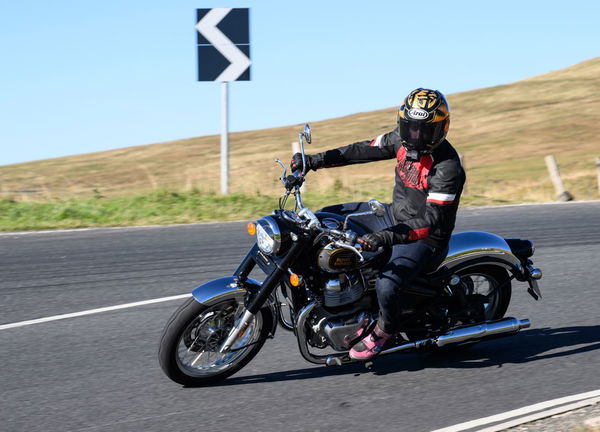
The Classic 650’s suspension is firm but for the most part, reacted kindly to small undulations in the road. However, it did feel less forgiving than I would have hoped or expected at higher speeds. The Classic 650’s torquey nature was clear from the outset. It might not be powerful, but there’s enough mid-range clout that you don’t feel the need to be constantly clipping through the gears.
The agility of the Classic 650 was something that took me by surprise, in a positive way. It doesn’t look like a bike which would be particularly willing to turn, but immediately, I felt comfortable flipping the bike from side to side, particularly in mid-to-low-speed corners. There was a certain level of confidence the bike gave me as I tackled the stunning Northumbrian mountains roads for the first time.
Given that we were riding for over four hours, I did wonder what the bike would begin to feel like late into the afternoon but the comfort level was a pleasing factor. Where I would have liked the bike to give me more feedback was the brakes. That’s not to say the brakes did not do their job as they worked well until putting a lot of pressure through them. It is just that the stoppers are not as confidence-inspiring as other elements of the bike. When pulling the lever it was almost as though there was a very momentary hesitation before you found the braking input you wanted.
Slow-speed manoeuvring is for the most part a non-issue although the clutch is a little bit stiff and like the brakes, had a slight dead zone which took a bit longer to adapt to than I anticipated. The bike was very easy to move, however, and felt weightless which was a positive.
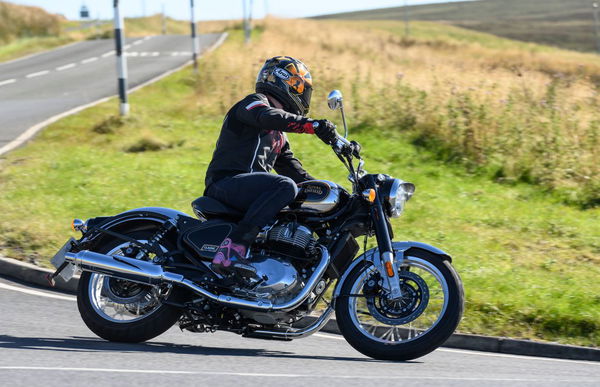
For the most part, the bike is very user-friendly and will be for a lot of different riders as its overall capabilities to tackle different types of roads was impressive. Not once did it seem out of place in the mountains, on dual carriageways or in congested towns. You’re not going to be let down by the Classic 650 and on top of that it has room to make improvements if you’re willing to add some jazzy accessories to the bike.
The build quality was impressive, with nice touches like a polished aluminium and chrome finish on the headlamp unit and front trafficators. It also includes a distinct teardrop-shaped tank, and the signature Royal Enfield nacelle that accommodates the new LED headlamp along with the signature ‘tiger lamps’ - a feature on Royal Enfield motorcycles since 1954.
The bike is full of nicely finished touches which gives it a very unique and almost handcrafted look. That’s especially the case with the swooping exhaust and the engine components.
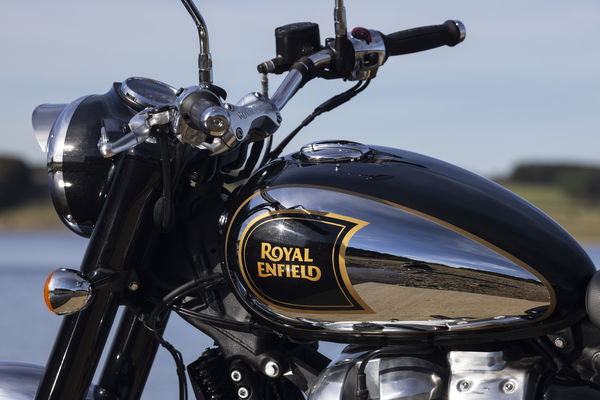
The riding position is quite relaxed and not as sporty/forward-lent as the Shotgun 650, but it’s not like you’re aboard a cruiser either. The pegs weren’t overly forward either and were positioned well, however, one small gripe I had was with the left side as I found that getting the kickstand around the left peg was not entirely straightforward.
What the riding position did allow for was to be comfortable no matter the amount of time spent riding the bike. The handlebar height sits at 1137mm and this was just right as I never found myself stretched out or struggling to reach for the levers.
Should you buy a Royal Enfield Classic 650?
After riding it for several hours on all types of roads, it’s clear that the Classic 650 is for someone who loves all things classic with a healthy dose of modernisation. The bike is much sportier than its appearance gives off which could attract those who regularly use the weekends to tear through twisty mountain passes. And, most importantly, it’ll almost certainly be very good value.
Find all the latest motorcycle news on Visordown.com.
